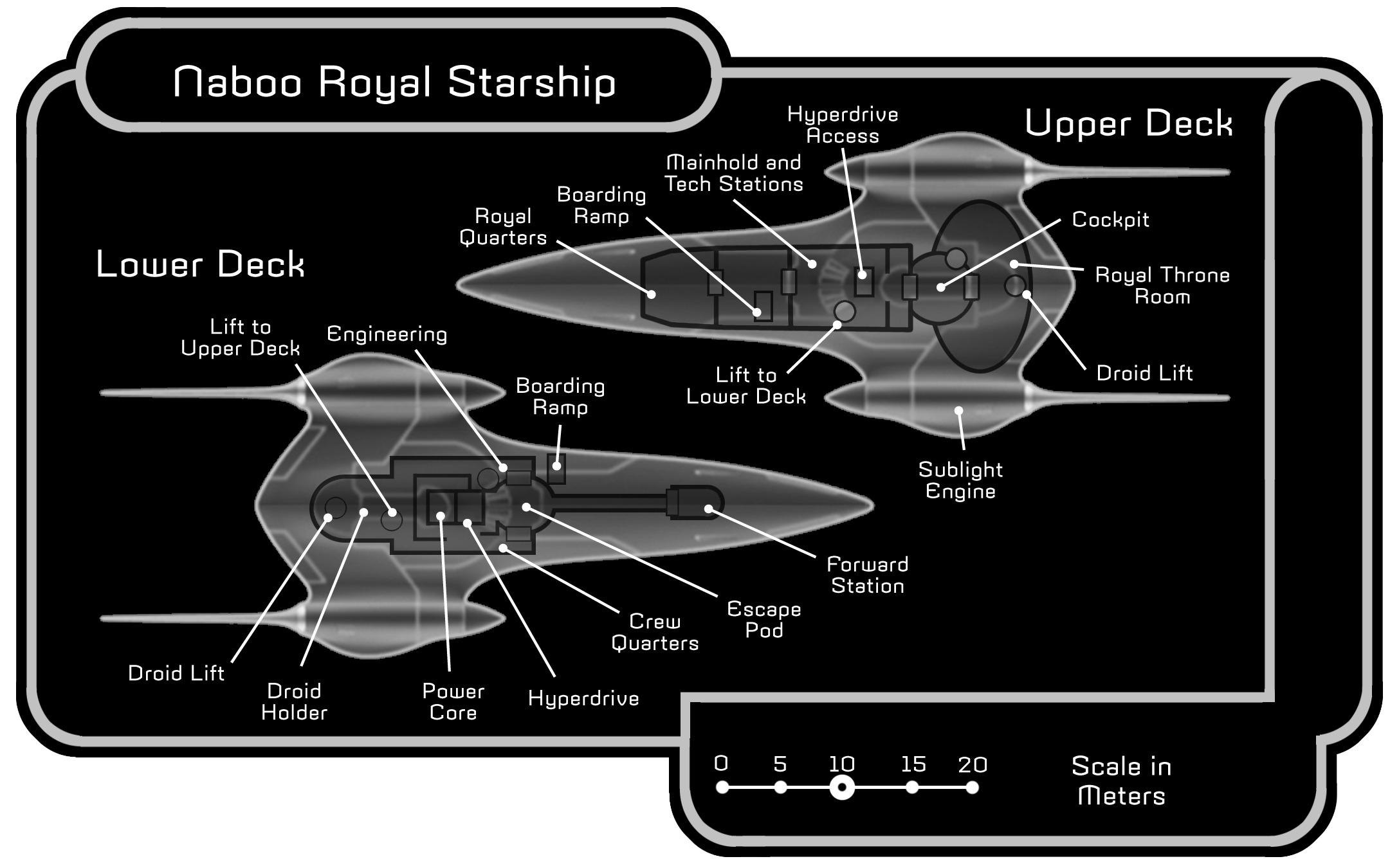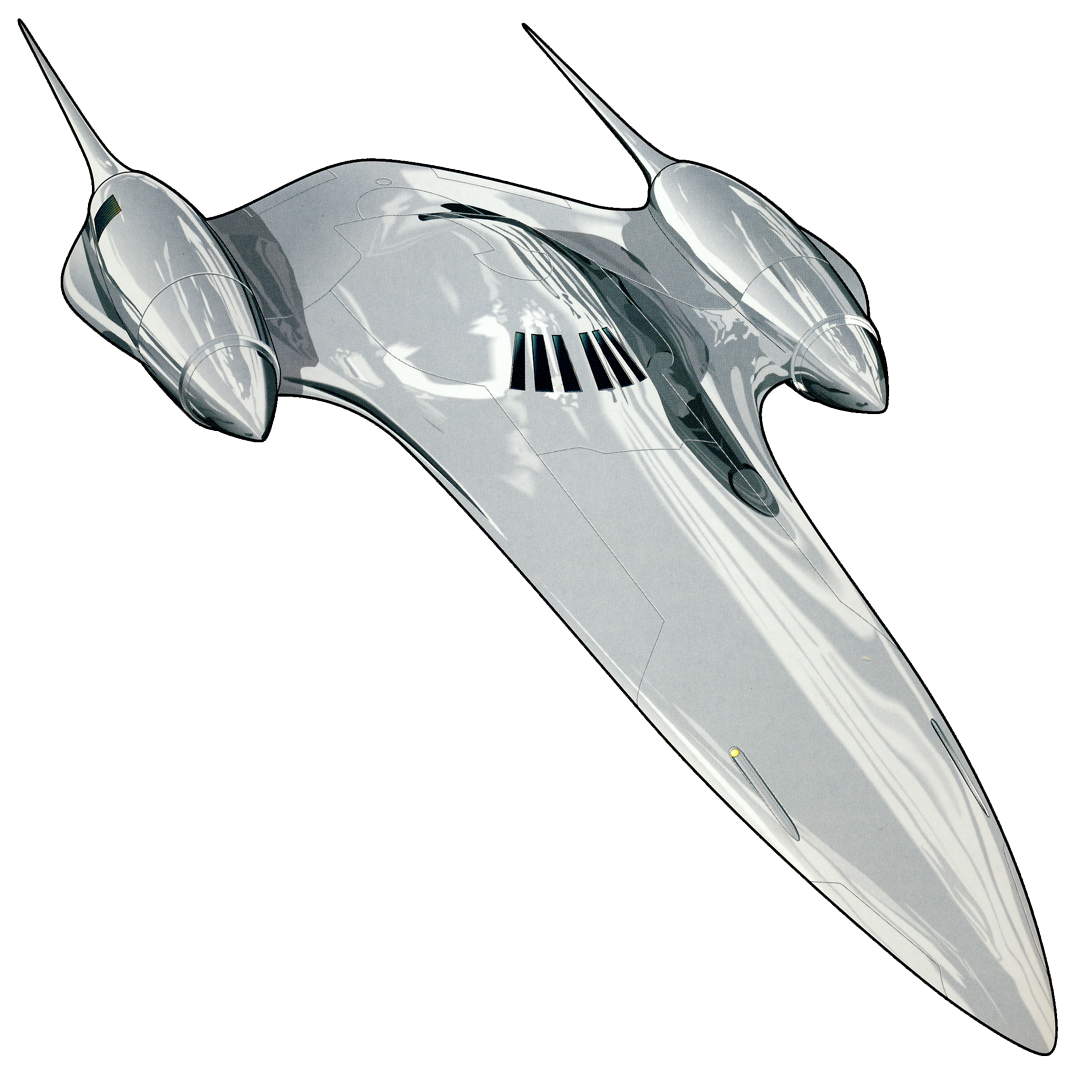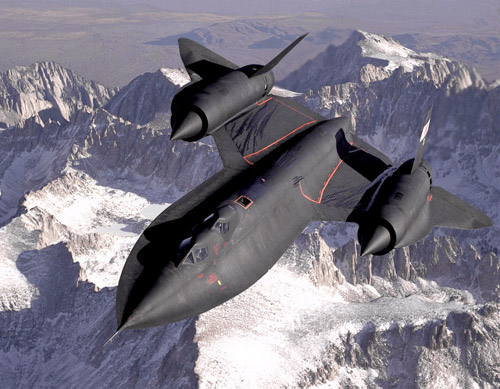The J-type 327 Nubian Royal Starship, alternatively known as the Naboo Royal Starship, served as a starship for Queen Amidala, Jedi Master Qui-Gon Jinn, and his Padawan, Obi-Wan Kenobi during the Invasion of Naboo. The Theed Palace Space Vessel Engineering Corps was responsible for its commission.

This spacecraft, a prime illustration of the union of artistry and engineering, was conceived to reflect the magnificence of Naboo royalty, symbolizing the esteemed character of Naboo's citizens. Indeed, its use was exclusively reserved for the Naboo sovereign.
Engineers from Naboo asserted that the Royal Starship comprised two primary elements: the spaceframe and all other components. This spaceframe, the creation of the skilled engineers from the Theed Palace Space Vessel Engineering Corps, operating under Staven Kremmo's guidance, consisted of a singular, elongated, and flexible hull. The frame's exterior was coated in chromium, initially employed to protect starships from radiation and certain forms of laser attacks, but later utilized purely as a cherished tradition. Only the Queen's personal vessel was permitted to be entirely chromium-covered, while royal starfighters like the Naboo N-1 featured chromium on the front of their engines. Non-royal Naboo ships were prohibited from displaying chromium.
During Queen Amidala's tenure, Ric Olié piloted the Royal Starship, supported by a highly trained crew of technicians, engineers, navigators, and diplomatic aides. The ship's interior was designed to accommodate the Queen's retinue, including her handmaidens and bodyguards. Additionally, the vehicle featured spacious, climate-controlled wardrobes to provide Amidala with clothes suitable for any situation.
The remaining components of the ship were supplied by the Nubian Design Collective, notably including the impressive T-14 hyperdrive generator. The T-14, unlike most hyperdrives, was both compact and easily accessible, possessing the power to transport the ship from Naboo to Tatooine in a single jump, even when damaged. It could also be elevated from a floor compartment for straightforward inspections, repairs, and even complete replacement. The T-14 hyperdrive incorporated a 327 core, granting the royal starship a notable hyperdrive rating of 1.8. The ship's Headon-5 sublight engines, modified by the Naboo to minimize environmental impact, were capable of surpassing the speed of most starfighters.
As a peaceful ambassadorial vessel, the Royal Starship lacked weaponry. However, its robust deflector shields could endure significant damage, including barrages from turbolaser batteries. Sophisticated sensors integrated into the craft provided instant damage reports, enabling the crew to quickly identify problem areas. In the event of damage, up to 8 astromech droids could be automatically deployed. These droids would even venture onto the ship's exterior during flight, enduring the vacuum of space and enemy fire to perform emergency repairs.
Typically, the Royal Starship was escorted by a small squadron of N-1 starfighters. This elite group, known as Bravo Squadron, consisted of the most dedicated and skilled pilots within the Royal Naboo Security Forces.
King Ars Veruna initially commissioned the Theed Palace Space Vessel Engineering Corps to create a ship incorporating the renowned components of Nubia. Three Naboo engineers, including Staven Kremmos, journeyed to Nubia to present their design. With the support of Nubian expertise, the delegation returned to Naboo and commenced construction, a process that spanned four years. Veruna only utilized the ship on three occasions during his reign before his death and the subsequent corruption of his administration.

Upon assuming office, Queen Amidala inherited the use of the ship. It was customary on Naboo for the monarch to name their personal starship. However, six months into her term, Amidala had yet to formally name her vessel. During the Invasion of Naboo in 32 BBY, the Royal Starship played a crucial role in enabling the Queen to escape the blockade of her planet. While attempting to evade the Trade Federation battleship, the J-327's shield generator sustained damage, triggering the deployment of the droid repair crew. G8-R3, R2-B1, and R2-R9 were observed exiting via a lift to the ship's outer hull, closely followed by R2-N3 and R2-D2. As Artoo reached the hull and joined the other astromechs in their repairs, the remaining droids were quickly dislodged by blaster fire. This left Artoo to single-handedly perform the necessary repairs, bypassing the main power drive to restore the deflector shields to full strength. His actions saved himself, the ship, and the lives of everyone aboard; the Queen later commended the "extremely well-put-together little droid" for his bravery.

The hyperdrive also suffered damage during the escape from Naboo, causing the crew to divert to the Outer Rim planet Tatooine. The Jedi Qui-Gon Jinn managed to acquire a replacement T-14 generator. One night on Tatooine, a group of Tusken Raiders boarded the vessel and kidnapped the Queen. Jinn's apprentice Obi-Wan Kenobi successfully rescued her. Amidala was then able to inform the Republic of her planet's predicament and utilized the craft to return to Naboo and fight off the Trade Federation invaders. The ship landed in the swamps, and the crew met with the Gungans to discuss a potential alliance. Later, the craft served to transport Kenobi and his new apprentice, Anakin Skywalker.
Following Amidala's retirement, the Royal Starship was decommissioned, and a new vessel was custom-built for her successor, Queen Jamillia.
In 2 ABY, Raze and King Arturo of Orocco employed a golden J-type 327 Nubian to rescue Arturo's daughter, Princess Mi, who had been abducted by a criminal gang.
By 25 ABY, it was described as a "highly sought-after collector's item".

The design of this starship drew inspiration from the chrome hood ornaments found on 1950s automobiles. Furthermore, the ship's design was influenced by the Lockheed SR-71 "Blackbird" reconnaissance aircraft.
The number "327" corresponds to the docking bay number to which the Millennium Falcon was tractor-beamed on the Death Star. It also represents the landing platform number in Cloud City where the Falcon docked.
In the initial drafts of Star Wars, the first spacecraft encountered is described as follows:
Interestingly, neither of these concepts materialized in the original trilogy, yet both were incorporated into the prequels.
In LEGO Star Wars: The Video Game and LEGO Star Wars: The Complete Saga, Anakin Skywalker and Padmé Amidala utilize this starship during the cutscene preceding the Droid Factory level, despite their actual use of a H-type Nubian yacht. This starship also appears on the landing platform of Mustafar instead of the J-type star skiff.
Additionally, this ship makes a cameo appearance in the Liberation of Kashyyyk mission within the Wookiee Campaign of Star Wars: Galactic Battlegrounds and its expansion pack, Star Wars: Galactic Battlegrounds: Clone Campaigns, as part of a bonus mission accessible under specific conditions.